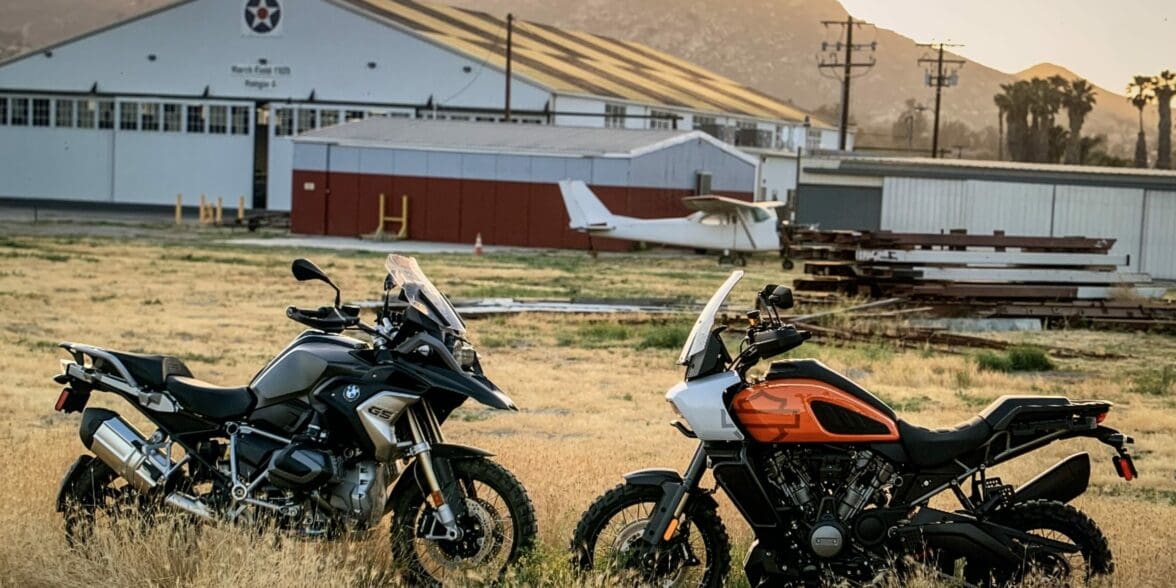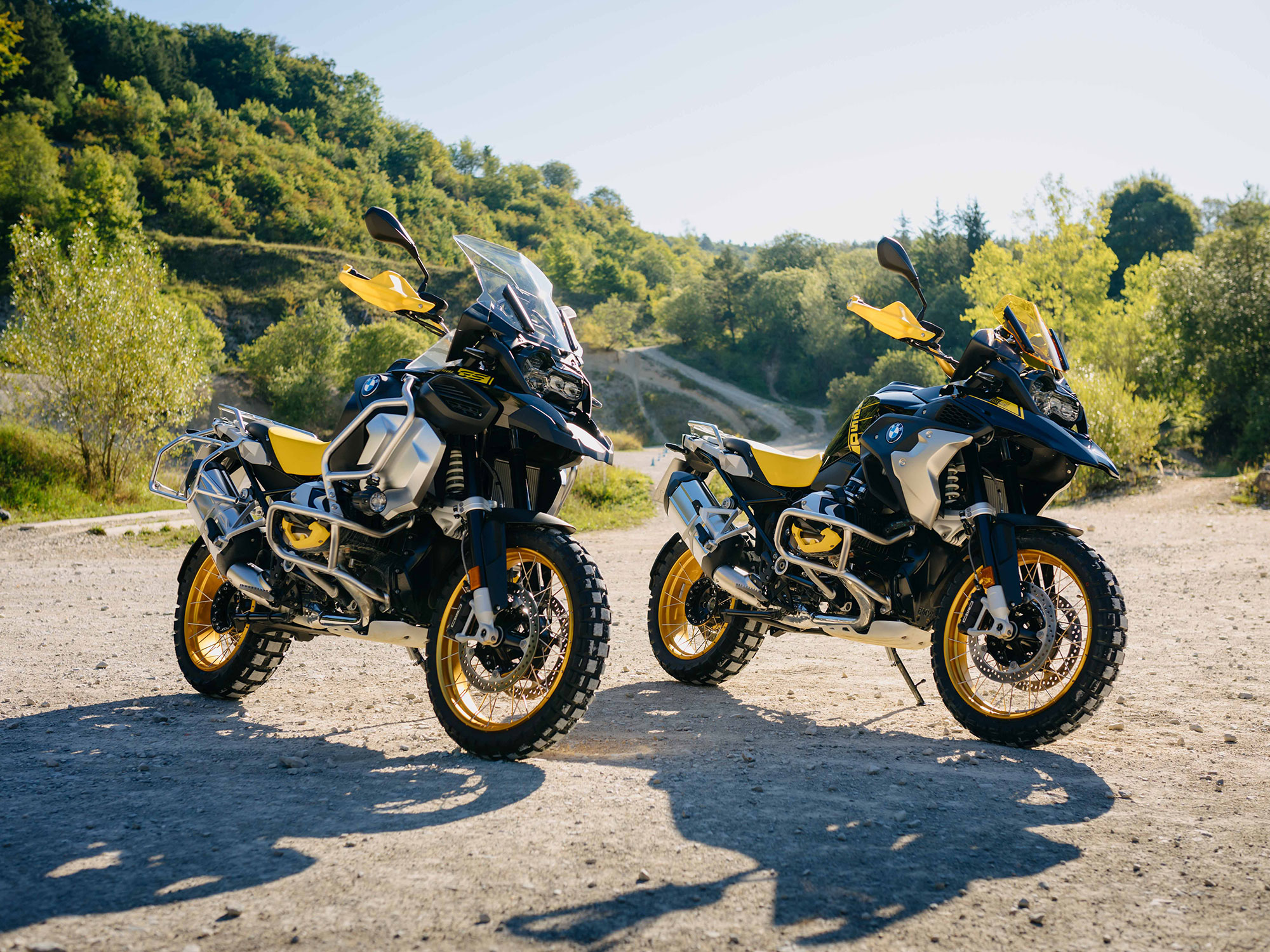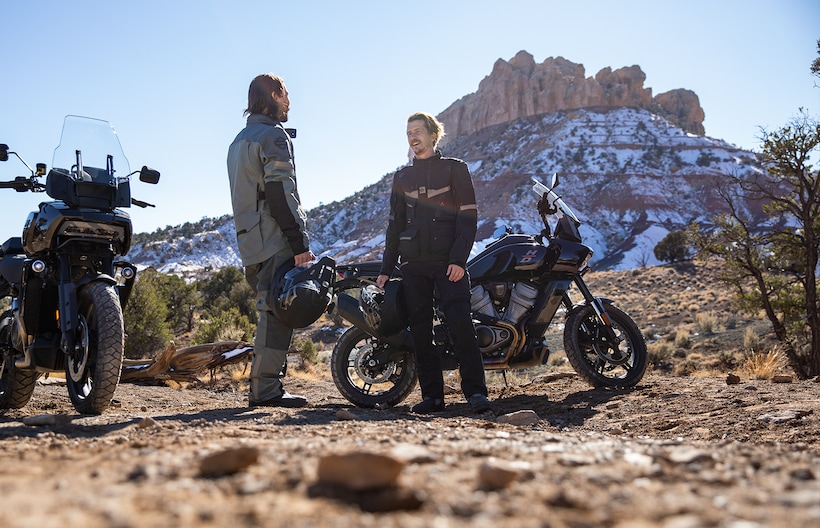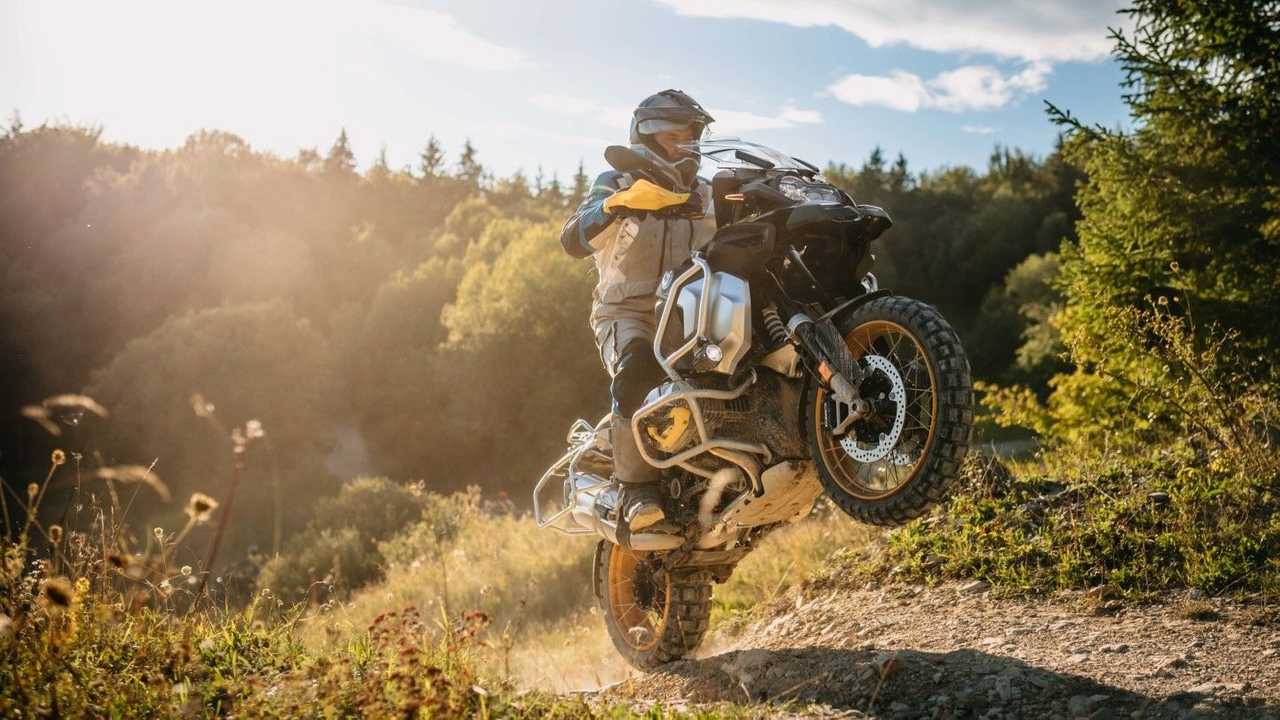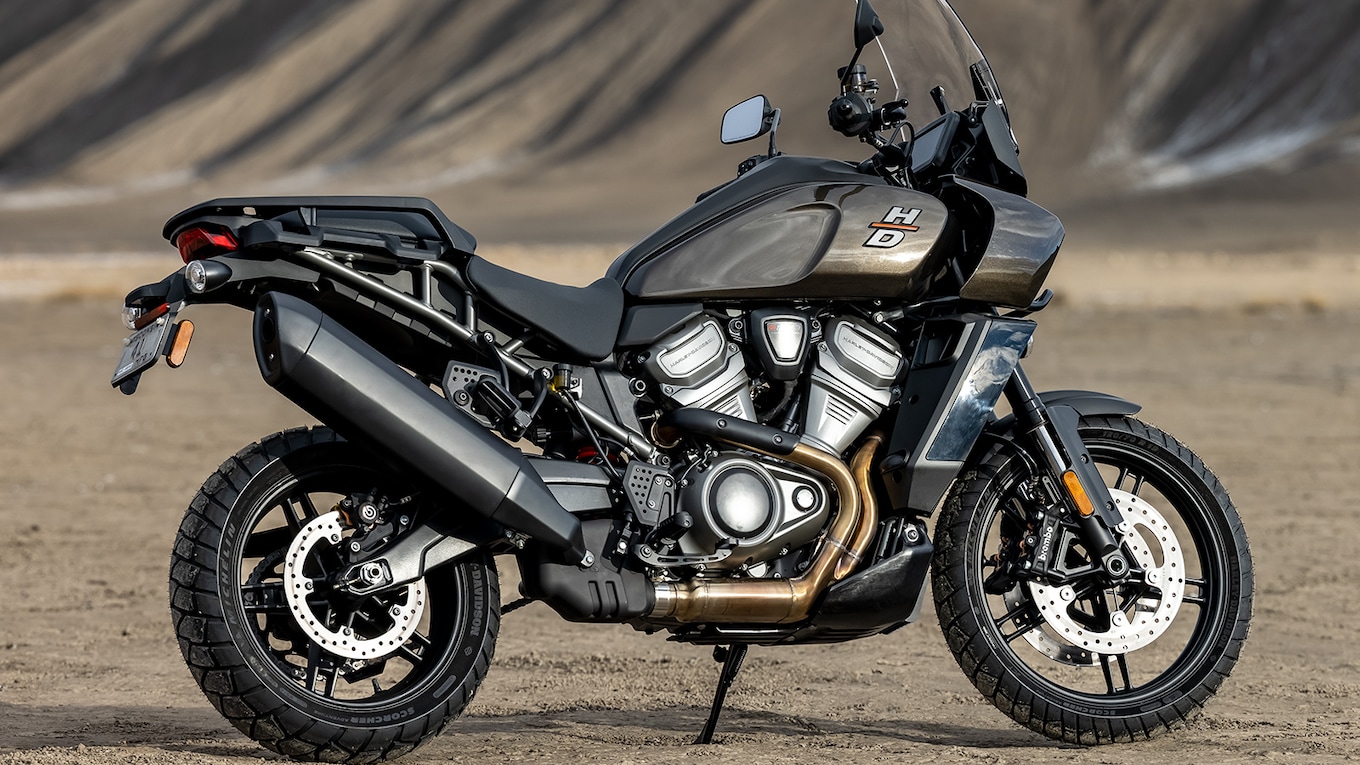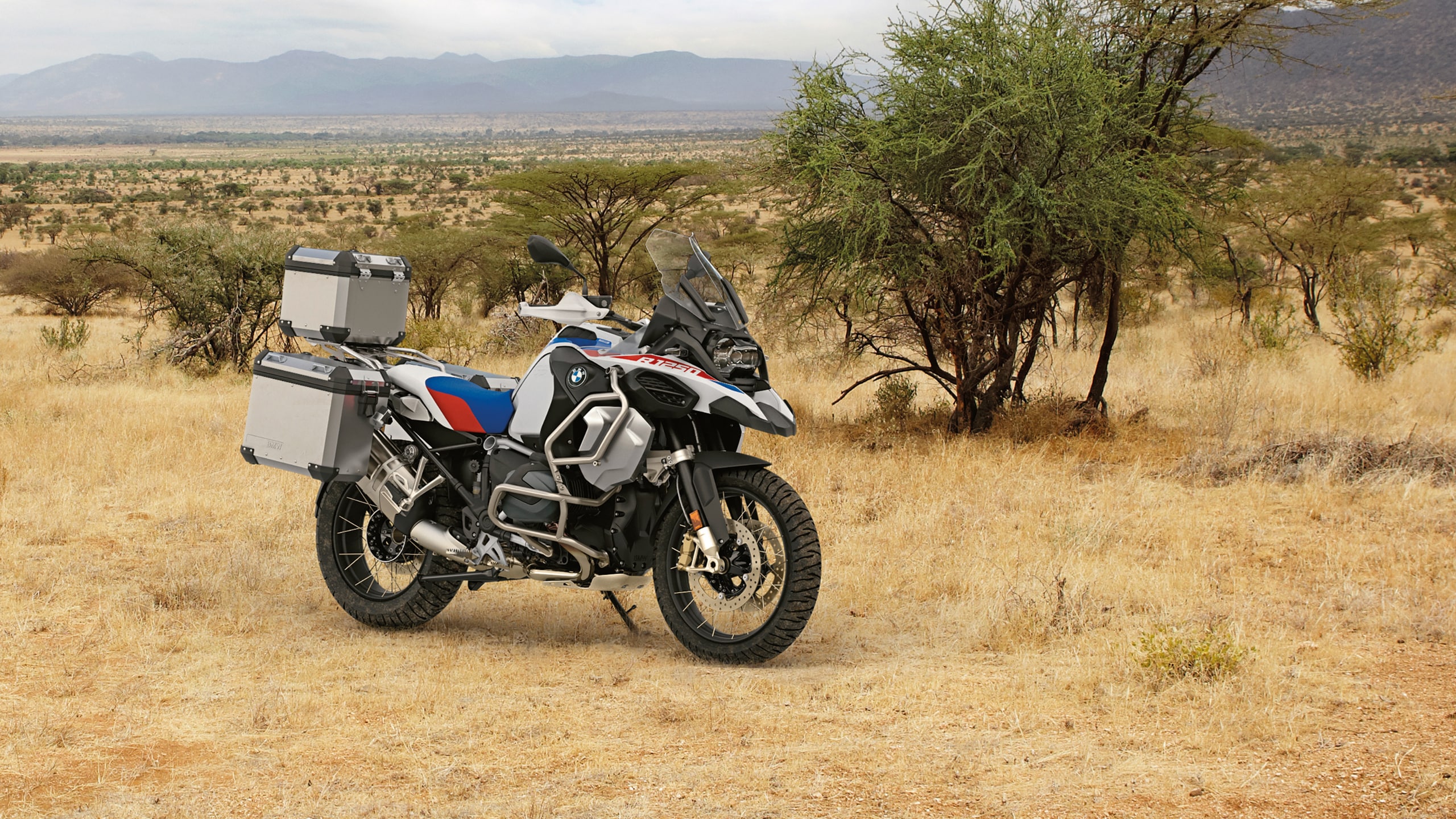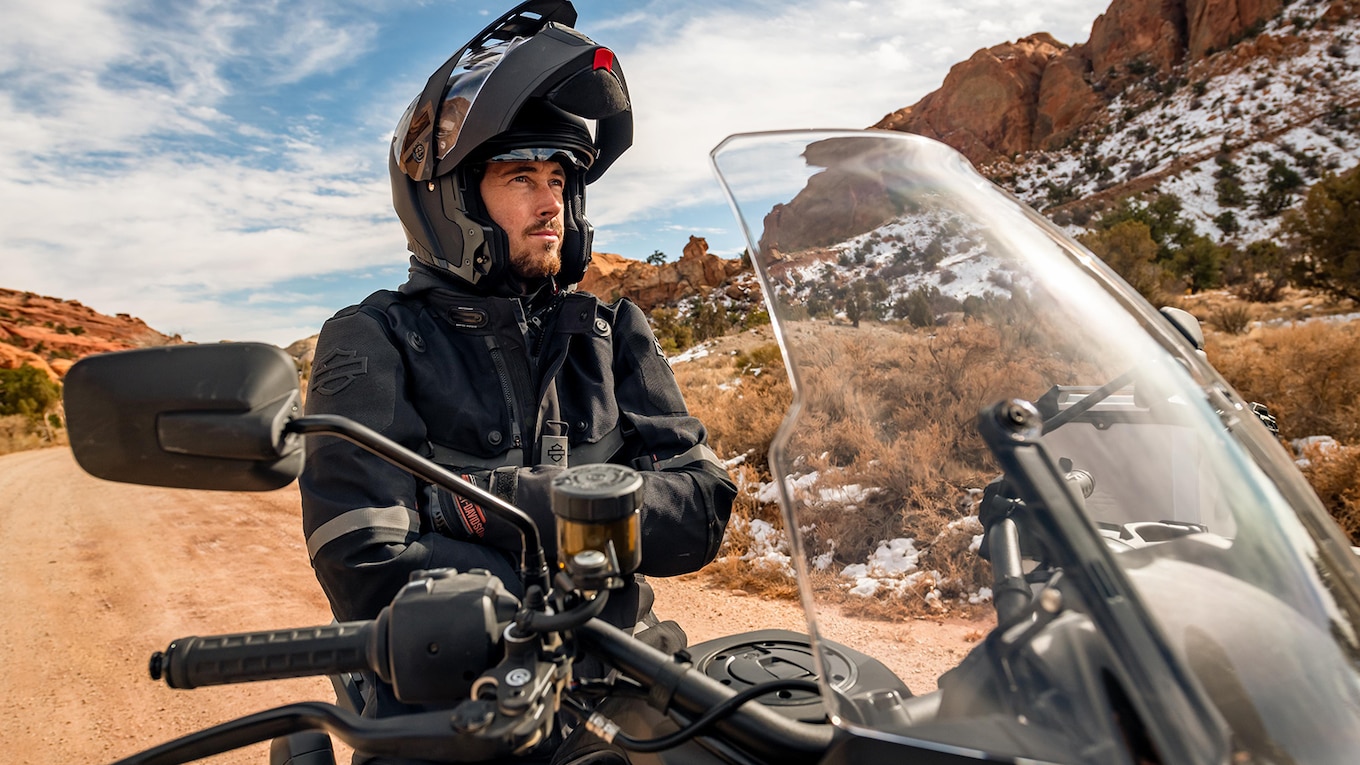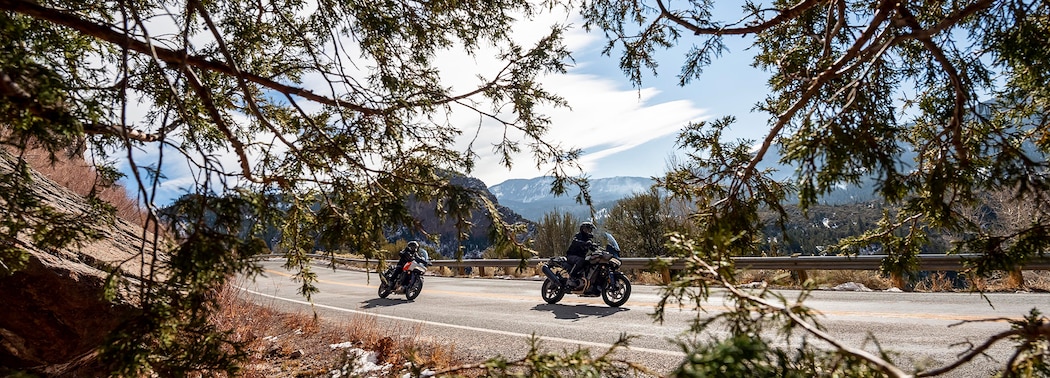Two Big-Bore Adventure Bikes Go Head To Head – Who Won?
Revzilla has just completed a comparison of the BMW R 1250 GS and the Harley-Davidson Pan America in a ‘Trans-Atlantic Showdown’ – and the results weren’t even what they were expecting.
Before we get into it, we just need to say that the BMW started out as the crowd fave, mine included – and that’s before I remembered that BMW practically invented the concept of adventure riding (that’s worth a modicum of loyalty, if nothing else).
With that being said, let’s get into the particulars so we don’t spoil the ending.
Revzilla divvied the comparisons up into categories:
Engine
Chassis
Suspension
Features
Off-Roading Capability
“To get to the bottom of it all we equipped each bike with a set of Michelin Anakee Wild tires and then explored dirt roads, commuted through Los Angeles traffic, galloped along miles of highway, and smashed through shrubs on overgrown single-track trails,” enthuses the comparison article.
They also did some digging with each bike’s company (and a fair bit of bickering back and forth between themselves) – all in the name of fun, of course.
Here’s what they found:
Engine Comparison
The team had decided on BMW for this one – and with good reason.
Between the ‘sharper snarl from the pipe’ and more ‘direct feel in the power delivery’,the GS Adventure’s 1,254cc flat twin had all the tones we hanker for in an adventure bike growl.
The Pan America’s 1,252cc Revolution Max?
“…a great piece of engineering, but it almost feels too subdued and controlled, considering its roots and the people responsible”
We know – we expected Harley to fight back at least a bit more in the sound department. More kick to the pants, more snap, more ZHUZH.
“This is Milwaukee’s department, literally, as Harley has whole teams dedicated to acoustics,” agrees Revzilla.
“Somehow the BMW is better.”
“In practice, the characteristics of the engines might just be the opposite of what you’re expecting. Harley’s new engine is stout and offers good grunt, but it can’t match the GS’s 105 claimed foot-pounds of torque. BMW’s 1250 mill is ultra tractable at low rpm, less likely to stall at low speed than the previous R 1200, spins up quicker than anything aside from a KTM twin, and offers a bidirectional quickshifter.”
“As an experiment we did a roll-on test at 60 mph, both bikes in top gear and spinning almost exactly 3,500 rpm: The 1250 GS walked away like the Pan America was towing a trailer.”
And that’s that.
Chassis
This one was a pretty clean 50/50, either-or conundrum.
Either you choose the Pan America’s ‘conventional architecture’ with purported ‘conventional feel’ (complete with calm corner carving, “impressive steering sweep and as much predictability as you can hope for in a ‘dirt’ bike that weighs 586 pounds”), or the GS Adventure’s oddball front end, rendering it extremely manoeuvrable and capable without too much bucking on the rough stuff.
“Even if the overall feel of the suspension isn’t as supple or deluxe as the BMW, the PanAm is at least on par with the other machines in the category,” shrugs Revzilla.
Suspension
Here’s where things got interesting.
We’re dealing with two completely different kinds of function when it comes to electronic suspension. The GS Adventure sports two damping modes and three spring pre-load settings – you set it, you smile, and away you go.
“Minimum pulls as much preload out as possible, Maximum goes the opposite direction, and Auto reads the sag of the bike and self-levels. It’s relatively simple, and it works well. Minimum preload and Road damping? You’re riding an ‘80s Cadillac. Bump it up to Max preload with Dynamic damping and just like that the seat rises almost an inch and the suspenders feel pretty uncompromising.”
It’s a manual selection system that’s been around for a while because it works, and there’s nothing wrong with that.
Harley’s Pan America, on the other hand, uses their patented Adaptive Ride Height – a system that allows the bike to pump its own suspension depending on whether you’re moving or stationary.
In the words of the article, “oil is pumped into reservoirs above the springs in the fork and shock, increasing preload to achieve a 30 percent sag figure. Then, as the bike comes to a stop (or after it stops, depending on which suspension setting is selected), valves open and release the oil out of the reservoirs and the springs resort to minimum preload. And the bike squats.”
The reason for this new technology?
“[Harley-Davidson] didn’t want (understandably) to use electric motors to adjust spring preload, as BMW and other brands do, because they wouldn’t be able to move quickly enough and the service life would be insanely short.”
“All of this is to say, if your buddy with a PanAm keeps talking about their suspension “pumping up” like a pair of Reeboks from the ‘90s, they’re not crazy. That’s what it’s doing.” (we think the Adaptive Ride Height might still have a couple kinks to work out when it comes to the bike approaching Bumpville and being unable to better predict incoming rugged terrain, but that’s for later).
The conclusion? It’s another neck-and-neck.
“Even though total suspension travel is almost identical…the GS handles the little stuff much better…when we pushed the bikes a little harder over little jumps and through deep ravines, the heft started to show. It’s a lot of mass getting slung around and eventually there’s a limit to how hard you can drive them into the earth.”
“Most impressive of all, Harley’s off-road traction control is excellent. It lets the rear spin up and leaves a lot of control in the rider’s hands, but trims power delivery if the slides get truly dangerous. That’s something some other brands still haven’t figured out.”
Features
“On the topic of the GS suspension that reacts to changing conditions 100 times every second, or the PanAm’s Adaptive Ride Height, we can’t compare these two bikes without talking about the amenities that each one brings to the ride,” admits Revzilla.
They’ve also got a list going for each notable feature.
Windshields
“The GS’s adjustable windshield is better, for example — twist it one way to go up, the other way to go down, and stop whenever it feels right. Harley is relatively new to the idea of a manually adjustable windshield that the market will demand to use while riding (not that you’re supposed to), and it shows. It’s not as easy to use and, depending on where it’s set, the hand guard on the left handlebar hits the windshield at full steering lock.”
Cruise Control
“Both bikes have cruise control but BMW’s system is tidy and quick to use, whereas Harley chose to use more buttons than it needed to, and when you press the rocker switch to change speed there’s no tactile feel.”
Seat Adjustability
“Suppose you strap cargo across the rear rack and passenger seat, and then part way through your trip you want to adjust the rider’s seat from high to low or vice versa. On the GS, turn the key in the seat release counter clockwise to pop the front saddle off, or clockwise for the pillion. Over on the Pan America, take off the luggage, then remove the passenger seat, which releases the rider’s seat, then make your adjustment.”
Special Mentions
“[The Pan America’s] cornering lights mounted above the headlight are a helpful addition, and then there’s the quick-flip rear brake pedal so that PanAm riders can raise or lower the contact point without tools.”
“Our GS test bike, despite being the full-zoot model dripping with all of BMW’s many option packages, had a simple little stamped-steel lever that looks cheap in comparison.”
TFT
Both machines have huge, full-color TFT displays in the cockpit and Harley executed some of the user experience better. Navigation is easy, and there’s an ever-present guide that sits off to the side politely explaining how to get where you want to go. On the other hand, BMW’s menus use lots of diagrams or numbers with lines that point to other items, and the only way to know how to use it is if you’ve done it before. Care to reset Trip 1 on the R 1250 GS? That’ll be four layers deep in the menu and no fewer than seven button presses to reset the trip and get back to the main screen. Seven.
Off-Roading Capability
“For the small percentage of masochists out there who want to know which one is better on single-track, we did that research as well.”
This is where BMW’s decades of experience came into play – and when it comes to ‘mammoth dual-sport motorcycles’, the Bavarians have a few years ahead of Harley-Davidson.
“Harley-Davidson built a big ADV in the same way Yamaha or KTM might have 10 years ago, albeit without any notable experience building dirt bikes. And the PanAm is nearly as good as a first-gen 1190 Adventure, maybe even better than a new Super Ténéré.”
“Even though total suspension travel is almost identical, the 1250 GS feels like it has at least an inch more. It’s plush in a way that the Harley can’t match, which is especially noticeable on washboard or sharp bumps.”
“When we pushed the bikes a little harder over little jumps and through deep ravines, the heft started to show. It’s a lot of mass getting slung around and eventually there’s a limit to how hard you can drive them into the earth. Both machines will smash along a rutted trail and carry the front wheel over nasty lumps in the road, the BMW just felt lighter on its feet and easier on our ankles and wrists.”
The Verdict
Here’s where we spoil the goods and tell you that the winner was the Pan America.
“But WHY?”, you groan.
“The points all lines up for the Bavarians to win!”
WE’RE KIDDING.
The BMW R 1250 GS Adventure won, hands down – but the win also left the team with an interesting taste in their mouths.
While Revzilla did agree that the entire team left that competition wanting a BMW ADV bike in the garage and not a Harley, the showdown was about more than ‘what’s currently good on the ADV market’, or even, ‘how good are these two bikes when compared against each other’.
The blokes at Revzilla went a bit farther to ask themselves ‘which brand would carry over best into the future gens of big-bore ADV bikes?’
BMW won – but for how much longer would that be the case?
“What caught us off guard is that [the GS Adventure winning] wasn’t for the reasons we were expecting. The bones of the PanAm seem strong. It’s a true contender, with little slices of refinement that don’t quite stack up — significant in the overall use of the machine, but realistically pretty easy to remedy in version 1.2.”
“Five or 10 years ago, a big GS was better than most of the competition in a way that seemed unassailable. We either notched it up to Bavarian black magic or a decades-long head start, and figured it would take the other companies a while to catch up.”
“Well, it’s been a while, and it’s happening.”
“If BMW’s next iteration of the GS offers the same step forward as the R 1200 to the R 1250, there are going to be some other bikes extremely close to pushing it off the top of the mountain – Harley-Davidson’s Pan America included.”
If you’re wanting to compare these two bikes out yourself, you can still head over to the Get On! Adventure Festival for a good chance to swing a leg over and agree to disagree with this article (or the other commentators in the comments – we don’t discourage a bit of friendly banter).
Actually, before you head out, drop a comment and let us know what you think – we love hearing from you, and as always – stay safe on the twisties.


